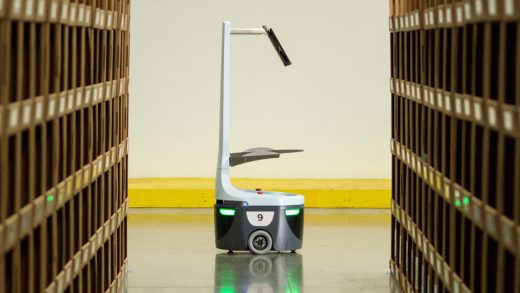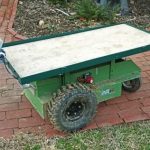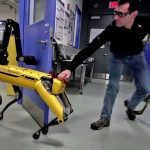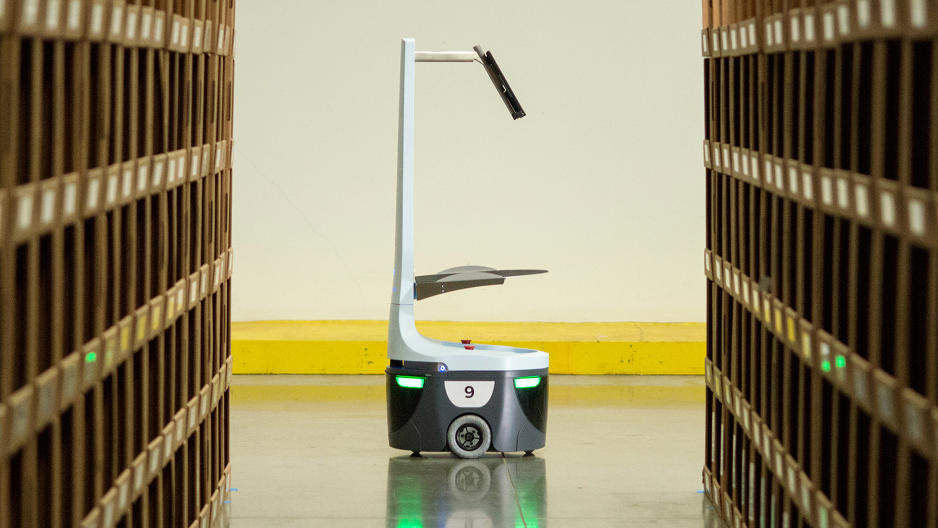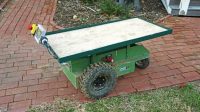These Are The Robots Who Are Fulfilling Your Christmas Orders
Some of the gifts you order this holiday season just might get shipped with the help of a robot.
Partly in response to an improving labor market that’s made seasonal warehouse worker shortages a staple of year-end news coverage for the past several years, more logistics operations are turning to robots to make operations more efficient.
“What we find a lot of our customers are experiencing challenges in, especially as you think about what happens to an operation as you enter into the holiday season, is quite simply there’s not enough people to do the work that’s required,” says Matt Rendall, cofounder and CEO of Clearpath Robotics. “We see customers that have literally half of their facility shut down because they can’t bus people from far enough way.”

Clearpath Robotics is one of several companies offering what are essentially self-driving cars designed to operate in warehouses rather than on the road (their version is called Otto Motors). Warehouse workers, especially in e-commerce businesses, spend much of their time picking objects out of one type of box, walking them to packing stations, and loading them into other types of boxes for shipping. And while humans are still better at machines at finding the right item, making sure it’s in shippable condition and packing it up, there’s no reason not to outsource the middle transportation step to machines, Rendall says.
“The ability to pull it out of the bin and put it into a box for packing is the most valuable thing you could have a fulfillment laborer do,” he says. “Once they’re done picking their order, they need to walk 500 feet to the packing station, and while they’re walking 500 feet to the packing station, they’re not picking the next order.”
Unlike some other forms of automation, Clearpath and its rivals don’t require that warehouses be redesigned to accommodate robots or that the machines be kept away from humans in order to ensure their safety. Instead, the machines are working alongside people, essentially doing the easiest part of the job, says Clint Reiser, director of supply chain research at analyst firm ARC Advisory Group.
“It’s not a 100% automated strategy—it’s more a strategy of using robots along with human labor,” he says.
For Clearpath, it generally takes only a day or two to get the machines up and running in a new environment, Rendall says.
“We take Otto on a tour of the plant—we will manually drive Otto around the facility teaching it its environment, its surroundings, and during that process it’s creating a memory of the map that the factory has,” he says. “We go through a basic configuration in software—it’s a very point-and-click process, and then within a day we’re doing pickups and deliveries.”
Other startups in the field—and the field is rich with new companies eager to fill the void left by Kiva Systems, a robotics company famously acquired by Amazon in 2012 that now only provides new bots to its parent company—offer similar ease of installation. (Amazon didn’t respond to multiple requests for comment).
Robots from San Jose-based Fetch Robotics can follow workers around a warehouse as they pick items from shelves, dispatching a replacement and traveling to a packing area when an order’s done, or stay put until a human orders them to a particular destination.
“As a picker picks a set of goods they walk by a robot and put the goods on the robot, so the picker can still continue picking,” says Fetch CEO Melonee Wise.
And machines from Locus Robotics, a Wilmington, Mass., startup spun off from retail warehouse operator Quiet Logistics, essentially divide warehouses into geographical zones, where robots roll to particular shelves and summon nearby humans to pick products they need to fill orders.
“We decided that with our robot solution you’d make it so you didn’t have to disrupt anything at all,” Locus founder and chairman Bruce Welty says. “All you have to do is put this little sticker—we call it a locus point—basically a barcode you want anywhere you want the robot to be able to navigate.”
A tablet mounted on the machine lets workers know what items they need to grab.
“The lights are blinking green saying, ‘I need to have somebody do a pick,’” Welty says. “All his job or her job is, is to walk around and look for robots that are green.”
As, well, robotic as that job seems, Welty says that when Quiet Logistics gradually rolled the robots out across one of its facilities, employees clearly preferred to work in the areas with the machines. But as robots get increasingly sophisticated at warehouse chores beyond going from place to place, it’s hard not to imagine they’ll begin to replace some of their human colleagues altogether.
“I think it can cut into the workforce,” says Reiser. “I think it’s part of the idea.”
In a now-annual competition for item-picking robots, sponsored (naturally) by Amazon, progress has been rapid, with this year’s winner able to pick and unload a variety of consumer goods from fairly densely packed shelves. And bots from Los Angeles-area startup InVia Robotics can already grab basic items like boxed electronics and ink cartridges from shelves, says InVia CEO Lior Elazary.
“One of the things that we believe does set our robot apart is the picking aspect,” he says. “We can really handle from about a pack of gum to about a 40-pound case of soda.”
The machines use a sliding arm equipped with suction cups to pull stacked items onto themselves with no need for human intervention.
The company rents the robots for monthly fees that can come out to about 10 cents per pick, or even less with 24-hour operation, compared to between 40 and 60 cents for a non-automated warehouse. For some items, like boxes of toner, the robots can even transport items directly to a label printer so they can be addressed and ready to be mailed out, though anything requiring “fine manipulation” still typically needs a human touch.
So far, Elazary says, customers have tended to use the robots to boost fulfillment throughput, not eliminate jobs. Humans are also still involved restocking the shelves for robots to pick from to fulfill orders, checking goods for quality purposes before they’re shipped out, dealing with special situations and training the bots to handle changes like new item packaging. Replacing miles of walking with more interesting work—such as caring for new automated colleagues—can help boost worker satisfaction and retention, he says.
“Some of those people actually become sort of robot whisperers,” he says.
Related Video: If Flexport Succeeds, Everything You Buy Will Cost Less
Fast Company , Read Full Story
(99)

